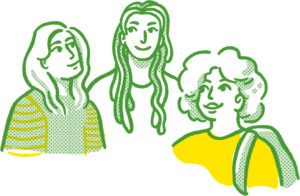Politik- und Rechtswissenschaften
Transitioning Gender Equality to the Equality of Sexgender Diversity
by Persson Perry Baumgartinger
Abstract
In this article, I will show that achieving sustainable “gender equality” is possible only when sexgender is seen as a whole, that is, when human rights are extended to those who are intersex, trans, and sexgender non-conforming. This transformation is shown in the 2006 Yogyakarta Principles (YP) and the 2017 addition to them, the Yogyakarta Principles Plus 10 (YP+10), in their extension of Human Rights Law in the years 2006 and 2017, based on sexual orientation, gender identity, gender expression and sex characteristics (SOGIESC).
To do so, I will take the word transition literally in the sense of trans-ness, and will use the concept of “trans-” as an intersectionalapproach to sexgender diversity. I will also use the neologism “sexgender” as an umbrella term to include the diverse spectrum of sexes and genders. Furthermore, data gathered on the situation of sexgender-diverse people worldwide, as well as claims made by intersex, trans and sexgender non-conforming activists, will support my conclusion that the SDG 5 (UN Sustainable Development Goal) must adopt a broader understanding of sexes and genders in order to do justice to intersex, trans, and sexgender nonconforming children and adults.
Introduction
The UN Sustainable Development Goal (SDG) 5 “GenderEquality” is one of 17 goals aiming to change global inequalitiesuntil 2030. Contrary to the prior Millennium DevelopmentGoals (MDGs), the SDGs not only target the GlobalSouth and East, but also make the Global North and Westaccountable for the global inequalities.
SDG 5 “Gender Equality”, however, uses the term “gender” as a binary concept that includes only men and women considered healthy, and counts only specific women and girls as relevant: “Achieve gender equality and empower all women and girls”. In this article, I argue that this is far too short a connotation of a phenomenon I call “sexgender”. Not only does it erase this notion of sexgender, a colonial concept, a multiplicity of diverse sexes and genders, which is deeply entangled in Western ideologies on sexual orientation and economy; it also leaves out large parts of the worldwide population, particularly intersex, trans, and sexgender nonconforming people(1) (ITGNC) (EATHAN 2018, p. 3), who face human rights violations in many areas, such as education, employment, housing, access to health sectors, detention, migration, media representation, as well as oppressive norms shaped by societal and religiously informed prejudices, just to name a few. Furthermore, the term “sexgender” includes Rubin’s “sex/gender system” (Rubin 1975,p. 195) and explicitly refers to a patriarchal, heteronormative, binary societal structure of power relations.
In this article, I show that the goal “gender equality” can only be sustainably achieved if we understand sexgender holistically; that means if the human rights of intersex, trans, and sexgender non-conforming people are included. The Yogyakarta Principles (YP 2006) and their additional Yogyakarta Principles Plus 10 (YP+10 2017) provide an example of how such a necessary transformation can be achieved with their extension of the Human Rights Law on the grounds of sexual orientation, gender identity, gender expression and sex characteristics (SOGIESC).(2) To do so, I take the term transition literally in the sense of trans-ness, and use the concept of trans- (Stryker et al. 2008) as an intersectional approach to sexgender diversity; I also draw on the neologism “sexgender” as an umbrella term to include different aspects of the diversity of sexes and genders. By including data on the situation of sexgender-diverse people worldwide and referencing the claims of intersex, trans and sexgender non-conforming activists, I arrive at the conclusion that the SDG 5 requires a broader understanding of sexes and genders to do intersex, trans, and sexgender nonconforming children and adults justice—as well as men and women who fall outside their respective societal and cultural norms.
(1) While the East Africa Trans Health and Advocacy Network(EATHAN) uses the term “gender non-conforming”, I extended it to “sexgender non-conforming”
(2) The acronym SOGIESC stands for sexual orientation (SO), gender identity (GI), gender expression (E) and sex characteristics (SC). Although this article does not focus on sexual orientation, it cannot be separated from sexgender diversity, especially in pre-colonial and non-western concepts.
Auszug aus: Baumgartinger, Persson P. (2021) “Transitioning Gender Equality to the Equality of Sexgender Diversity” in Binswanger, Christa u. Zimmermann, Andrea (Hrsg.) Transitioning to Gender Equality, MDPI, S. 85-94
Volltext abrufbar unter library.oapen.org/handle/20.500.12657/54275
Weitere Quellen aus Politik- und Rechtswissenschaft
› Baumgartinger, Persson P. (2019) Die staatliche Regulierung von Trans. Der Transsexuellen-Erlass in Österreich (1980-2010). Eine Dispositivgeschichte, transcript Verlag.
Geschlecht wird noch immer staatlich reguliert. Durch Gesetze, Erlässe und medizinische Richtlinien wird über Körper, Beziehungen und Lebensweisen bestimmt. Aktivist_innen kämpfen seit Jahrzehnten gegen eine solche Regulierung an, doch die binäre Geschlechtervorstellung bleibt zentral. Am Beispiel des österreichischen Transsexuellen-Erlasses (1980-2010) arbeitet Persson Perry Baumgartinger die wirkmächtigen ‚Reparaturmechanismen‘ des Zwei-Geschlechter-Dispositivs heraus, welche zur Konservierung des binären Geschlechterverständnisses beitragen.
› Collins, Patricia Hill (2022, 3rd ed.) Black Feminist Thought, Routledge.
In spite of the double burden of racial and gender discrimination, African-American women have developed a rich intellectual tradition that is not widely known. In Black Feminist Thought, Patricia Hill Collins explores the words and ideas of Black feminist intellectuals as well as those African-American women outside academe. She provides an interpretive framework for the work of such prominent Black feminist thinkers as Angela Davis, bell hooks, Alice Walker, and Audre Lorde. First published in 1990, the 30th anniversary edition includes Collins’ thoughts on recent political, economic and social developments.
› Kappler, Katrin und Vogt, Vinzent (Hrsg.) (2019) Gender im Völkerrecht – Konfliktlagen und Errungenschaften, Nomos.
Der Sammelband liefert Geschlechteranalysen in verschiedenen Bereichen des internationalen Rechts. Er richtet sich an Interessierte der Legal Gender Studies, der feministischen Rechtswissenschaft und des internationalen Rechts. Dabei werden durch interdisziplinär offene Beiträge auch Interessierte ohne juristischen Hintergrund angesprochen.
› Shaw, Sylvia (2020) Women, Language and Politics, Cambridge University Press.
This book addresses the problem of the underrepresentation of women in politics, by examining how language use constructs and maintains inequality in political institutions. Drawing on different political genres from televised debates to parliamentary question times, and fifty interviews with politicians between 1998 and 2018, the book identifies the barriers and obstacles women face by considering how gender stereotypes constrain women‘s participation, and give them additional burdens. It also explores the workings and effects of sexism, fraternal networks, high visibility in the media, and gendered discourses, through detailed case studies of Theresa May, Julia Gillard and Hillary Clinton.
Alle Texte sind online oder über UB Search zugänglich.






